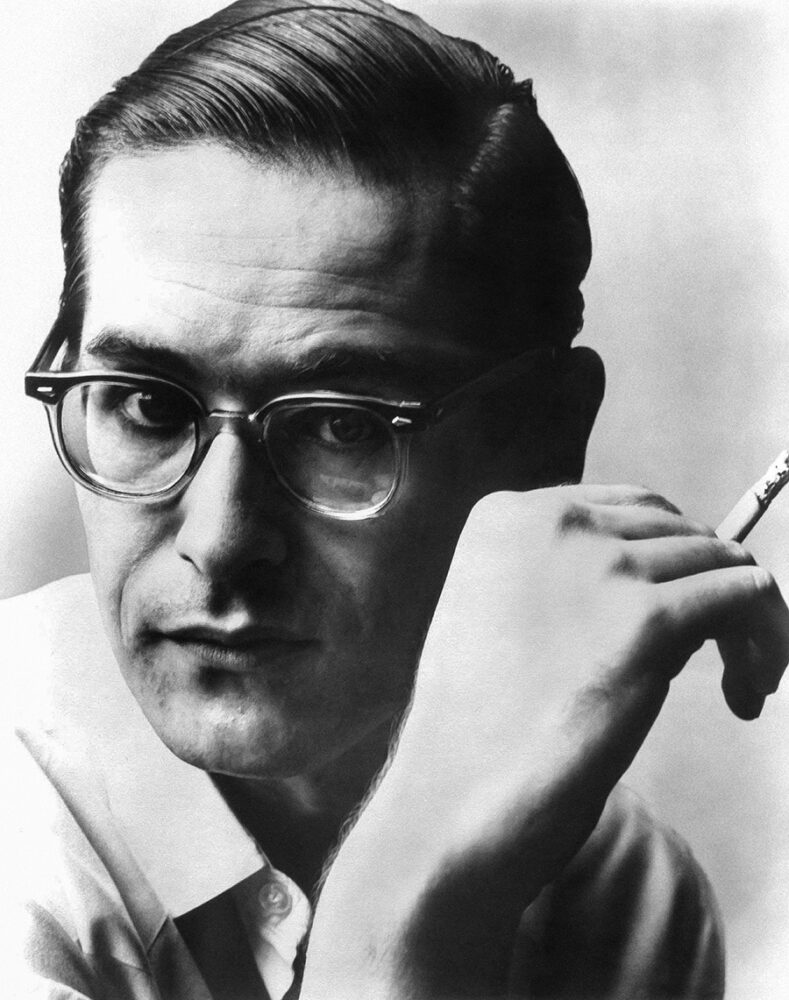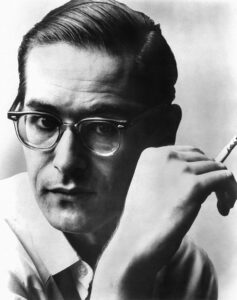Bill Evans
Bill Evans was a Louisiana-educated pianist and composer who made important contributions to the evolution of modern jazz.

Wikimedia Commons
A portrait of modern jazz pianist Bill Evans, 1961. Steve Schapiro, photographer.
The pianist Bill Evans is renowned in the world of jazz for both broad, bedrock contributions and specific achievements. Evans created a new musical language by introducing a more abstract, ethereal style that was influenced by the French Romantic classical school of the late nineteenth and early twentieth centuries as created by such composers as Claude Debussy, Maurice Ravel, and Camille Saint-Saëns. Evans also expanded the freedom of the jazz piano-trio format so that pianists, drummers, and bassists could each improvise at will, equally, to change the direction of a musical work in progress.
Evans—influenced by Debussy’s Prelude to the Afternoon of a Faun —played on and helped create trumpeter Miles Davis’s Kind of Blue. This album, released in 1959, is regarded as one of the most important and influential recordings in the history of jazz, particularly the evolution of “cool jazz” as characterized by relaxed tempos and a lighter tone, in contrast to the fast, complex sound of bebop that was also popular at the time. Evans’s compositions in the cool vein include the songs “Waltz for Debbie,” “Time Remembered,” and “Green in Blue,” the latter co-written with Miles Davis for Kind of Blue.
William John Evans was born August 16, 1929, in Plainfield, New Jersey, and was raised there. He attended Southeastern Louisiana University in Hammond, in Tangipahoa Parish, on a music scholarship. He first planned to become a flautist but decided to focus on piano instead. Evans graduated from Southeastern in 1950. After serving three years in the military, playing with the Ninth Army Band, based near Chicago, Evans moved to New York. There he worked and studied with the pianist, composer, and arranger George Russell, a pioneer in approaching music theory from the perspective of jazz rather than classical music as explicated in his book The Lydian Chromatic Concept of Tonal Organization.
Evans’s debut album, New Jazz Conceptions appeared in 1957. He joined Miles Davis’s band in 1958 and recorded with him on Kind of Blue, which also featured renowned saxophonists John Coltrane and Julian “Cannonball” Adderley. Evans left Davis’s band late in 1959 to form a trio with drummer Paul Motion and bassist Scott LaFaro. This threesome recorded four albums, including the acclaimed albums Sunday at the Village Vanguard and Waltz for Debbie, released in 1961 and ’62. Their work remains revered, as evidenced by a review written more than forty years later, by C. Michael Bailey for the website All About Jazz: “Along with bassist wunderkind Scott LaFaro and drummer Paul Motian, Evans perfected his democratic vision of trio cooperation, where all members performed with perfect empathy and telepathy.”
The year 1963 saw the release of Evans’s solo album Conversations with Myself. In 1966 he began an eleven-year collaboration with the bassist Eddie Gomez. In the ‘70s, he also collaborated with Tony Bennett, the eclectic vocal master of jazz, pop music, and standards.
Bill Evans’s health gradually deteriorated following decades of substance abuse. He died September 15, 1980, and was buried in Baton Rouge alongside his older brother, Harry, a musician and music educator.
